Winslow Homer learned early in life how to draw and paint, first as an illustrator of sheet music covers, later as a lithographer, and famously as a watercolorist. Born in 1836, he rendered faithfully the life of the times: the sailors, farmers, the war, the storms, the children, the schools.

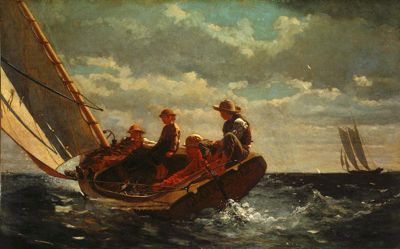
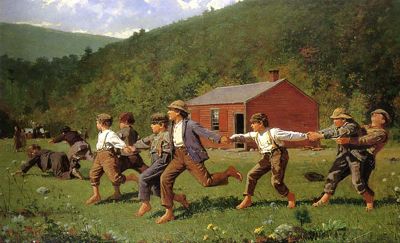
Homer's life spanned a period of growth and westward movement, but also an era of relative stability in people's lives and work. Review these references to learn more about this time in American history.
We see common themes reflected in Winslow Homer's work: people in small groups going about their daily routines; their closeness to nature; their spirit manifest in their hands and faces.
Don't you wish sometimes you could live back then? Everything was simpler. You walked to the local school, taught by your neighbor's daughter, worked in the fields or at the shore, and enjoyed the company of a few friends. We see in Homer's works:
• People in groups of two or three working and figuring things out together.
• Simple hand tools, and very few of them.
• People of varied ages in the same setting.
• No two people doing exactly the same thing.
• A range of clothing colors and styles.
• A clear view of the world outside.
At School
Let's take a closer look at the school of those halcyon days. What do we see?
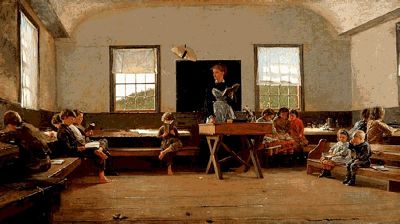
• People in groups of two or three working and figuring things out together.
• Simple hand tools, and very few of them.
• People of varied ages in the same setting.
• No two people doing exactly the same thing.
• A range of clothing colors and styles.
• A clear view of the world outside.
You can learn more about the schools of this era from these references:
Sample school report from 1877, including curriculum and examinations
McGuffey's Reader (Between 1836 and 1870 some 47 million copies of the McGuffey texts were sold. They became the textbooks of the nation, while also contributing to the establishment of the graded school and a more common curriculum.) Sample copy.
Life in school, and life outside, were pretty much the same. The school reflected the society it served. Children in school learned what they needed to survive and succeed in the world outside. The way you worked at school, the tools you used, the schedule you kept, fit well into the agricultural and artisanal economy of the day.
Education 1.0
Winslow Homer painted in the era of Education 1.0, when schools were designed to prepare farmers and craftsmen and weavers and cooks, who worked with simple hand tools in an economic and social environment that remained static for four and five decades at a time. In this first phase of American school history, schools settled into a comfortable pattern of preparing young people for pastoral prosperity.
Which was the most important thing for young people to learn in this era?
Education 2.0
But by the year of Homer's death, 1910, society had changed. More and more people worked in the factory, in the office, on the line, rather than on the farm, in the kitchen, and in the field.
Let's take a look at some photos of the workplaces of the early 20th century.
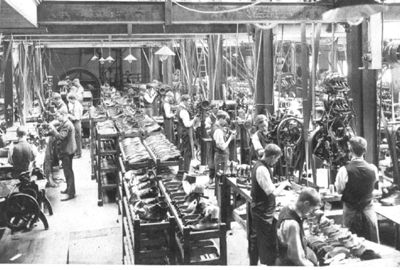
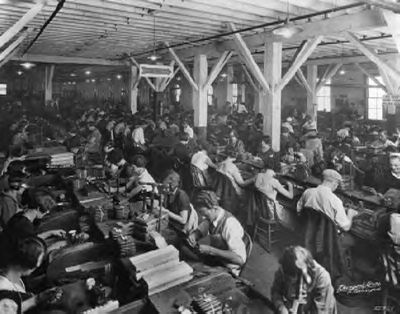
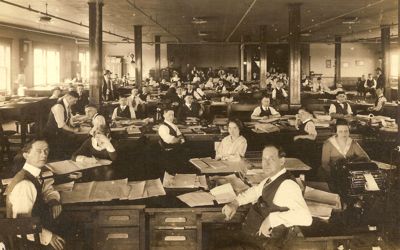

What do we see?
• People working alone at an individual work station.
• Specialized mechanical tools, one for each person.
• People of about the same age in each setting.
• Most people doing exactly the same thing as the person next to them.
• A uniformity of clothing styles and colors.
• Little or no connection with the world outside.
You can learn more about this era from these references:
Occupations in America, 1870-2000
Modern Times (excerpt from 1936 film) About Modern Times
Now let's take a look at the school of the same era.
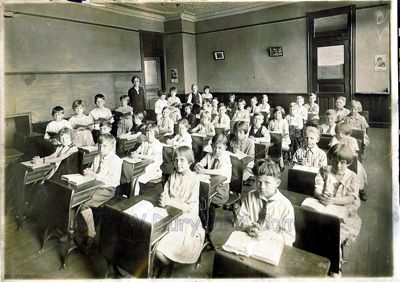
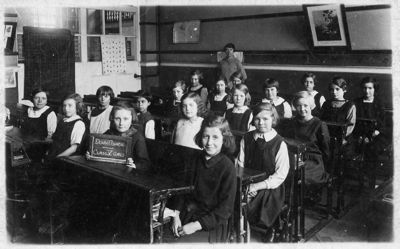

What do we see?
• People working alone at an individual desk.
• Specialized mechanical tools, one for each person.
• People of about the same age in each setting.
• Most people doing exactly the same thing as the person next to them.
• A uniformity of clothing styles and colors.
• Little or no connection with the world outside.
For more information about schooling in the 2.0 era, consult these references:
As the 20th century began, our schools were no longer so sleepy and sylvan. They woke to the challenge of industrialization, and the nature of the school changed. They shifted their paradigm to prepare people to survive and succeed in the industrial workplace. They entered the era of Education 2.0.
What were the most important things for young people to learn for Workplace 2.0?
Let's review the story so far:
Education 1.0:
• Agriculture, artisanry.
• Cooperative small group work.
• Variety of tasks.
• Hand tools.
Education 2.0:
• Manufacturing, processing.
• Solitary work in a group setting.
• Repetitive tasks.
• Mechanical tools.
Education 3.0 ?
Now we'll jump ahead a century. One hundred years later -- that's today -- let's see what the world of work looks like.



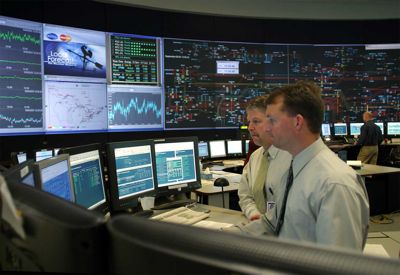

What do we see?
• People working in small groups to solve new problems.
• Digital information tools on the desktop and in their hands.
• Few people doing exactly the same thing as the person next to them.
• A variety of ages working together in the same setting.
• A variety of colors and styles of people working together.
• A variety of tasks and groupings.
These pictures represent Workplace 3.0, the information age doing its business in this 21st century of ours.
Now, if the schools have been keeping up with the changes in society, we would expect them to reflect this new world of work. We would expect Education 3.0 to prepare people for this new workplace. So let's take our camera into the schools of 2009.
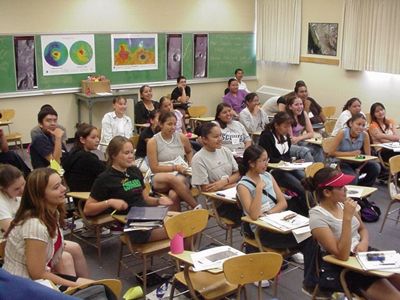
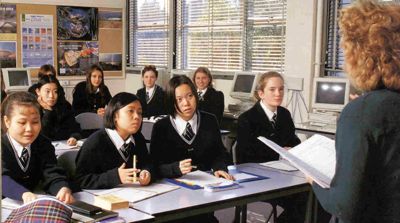

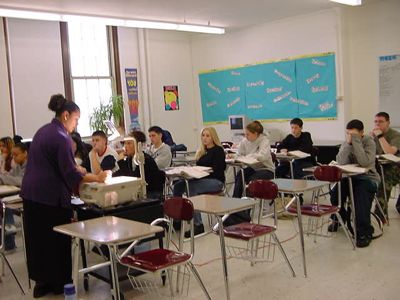

What do we see?
• People working alone at an individual desk.
• Specialized mechanical tools (the pencil and paper) one for each person.
• People of about the same age in each setting.
• Most people doing exactly the same thing as the person next to them.
• A uniformity of clothing styles and colors.
• Little or no connection with the world outside.
Will these students be prepared to survive and succeed in the modern workplace? Will they know how to use the information tools necessary to compete in a knowledge-based economy? Aside from the color in the photographs, how different are they from the pictures of Education 2.0?
The questions for us as educators today are:
• What should Education 3.0 look like?
• What should students learn to prepare them for Workplace 3.0?
• How should they learn it?
• How should teachers teach in Education 3.0?
• What tools should they be using for their work?
• Is my school 2.0 or 3.0?
If you could hire Winslow Homer today to paint a picture of your ideal school, to illustrate Education 3.0, what would be in the picture?
For more ideas on what Education 3.0 should look like, read these items:
A Day in the Life of a 21st-Century School, from Cisco Systems
The remainder of this work looks at the nature of Education 3.0, and how to build it in our schools. Our first task is to ask why: Why are schools slow to adapt themselves to the world around them? Why does it take so long for them to adopt obviously useful technologies?
| Back | Next | |
copyright © James G. Lengel 2010 |